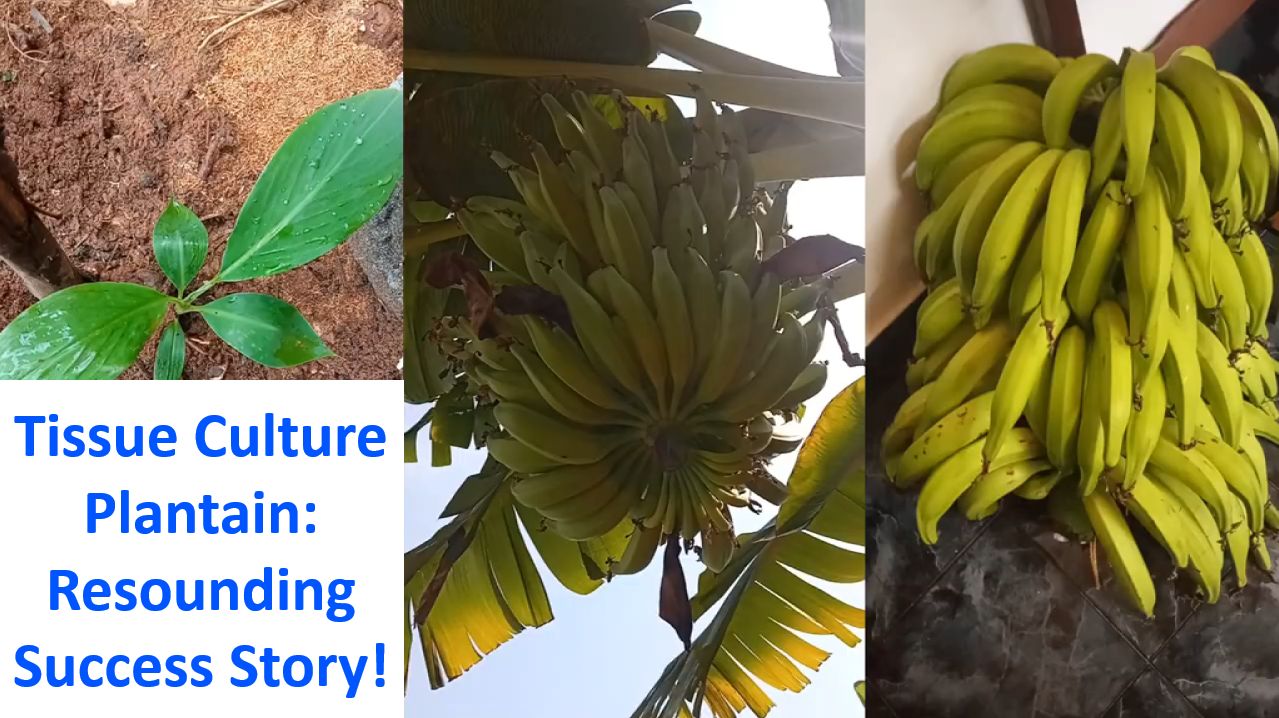Tissue Culture Plantain: Resounding Success Story!
Tissue Culture Plantain: Resounding Success Story!
This was how the banana plant looked soon after planting. It was brought from the local nursery along with nine others, each in a paper cup the size of an ice cream cup! Plants were only as thick as a pencil. I was rather sceptical of these tiny plants as the banana sapplings which I had seen earlier were at least the size of our arms. But they were not tissue culture plants, rather plants obtained from the banana plants naturally. Anyway at that time, I did not have access to other types of banana plants, so I decided to plant these tissue culture plantain plants. It was very easy to plant them because I needed only a small soil scoop to plant them. It was rainy season and there was no need for any water supply in this piece of land with no source of water supply.
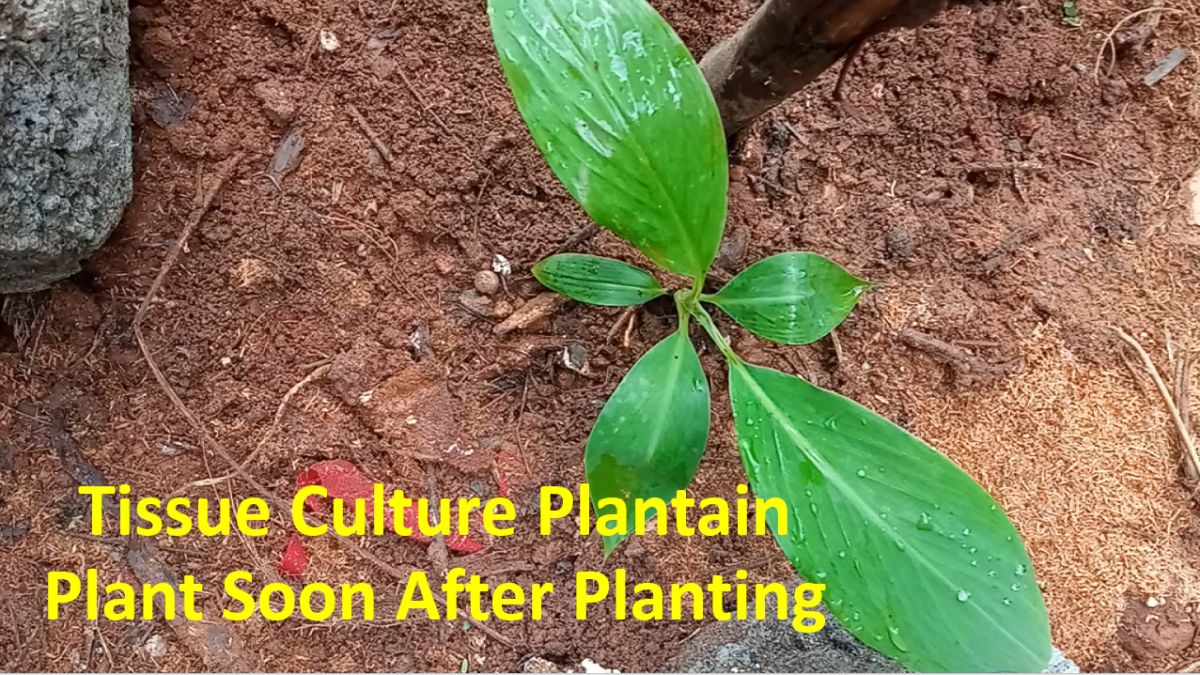
Simultaneously I had planted a few plants in large 18 inch garden pots also, as an experiment, to see how they grow. This was because I could take care of them better, beeing in my courtyard and could water them if needed. At that time I had no idea about how much these tissue culture plantain plants would grow. I hoped that they would ultimately bear fruits while gowing in the garden pots, something like a bonsai!
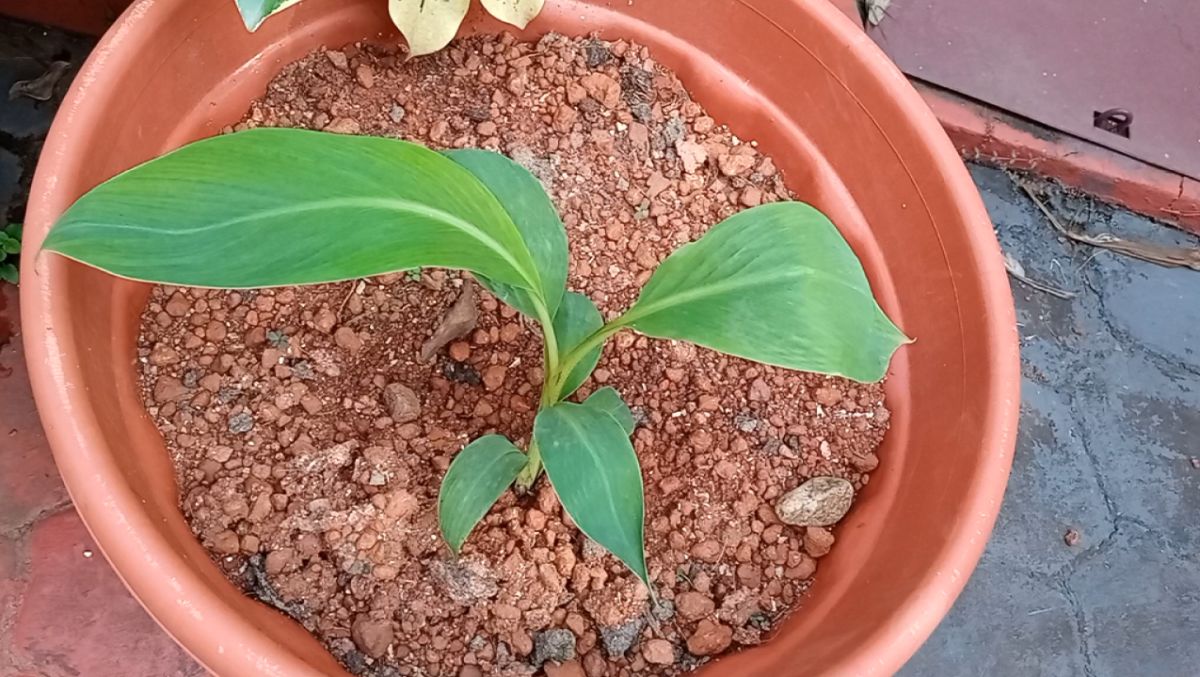
Initially they did grow well, due to daily tender loving care from us and so did the plants on ground soil. Though it would appear that the plant on the ground soil had better growth, these clippings were taken at different times.
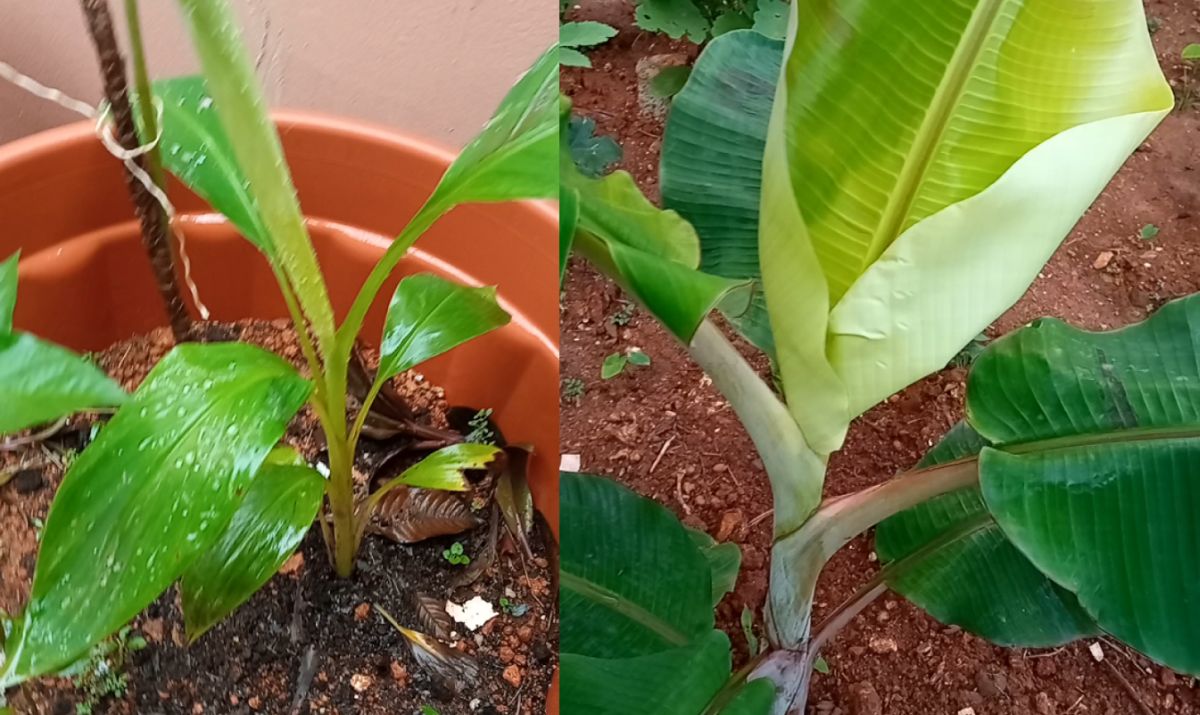
But I had to replant the plantain plants growing in garden pots on to ground soil for a different reason. After some time, plenty of itchy caterpillars started appearing in the plants growing in garden pots. So I was afraid that many of them would also find their ways into the house which was nearby. Hence I transplanted the plants at a distance, on ground soil, after removing all the itchy caterpillars.
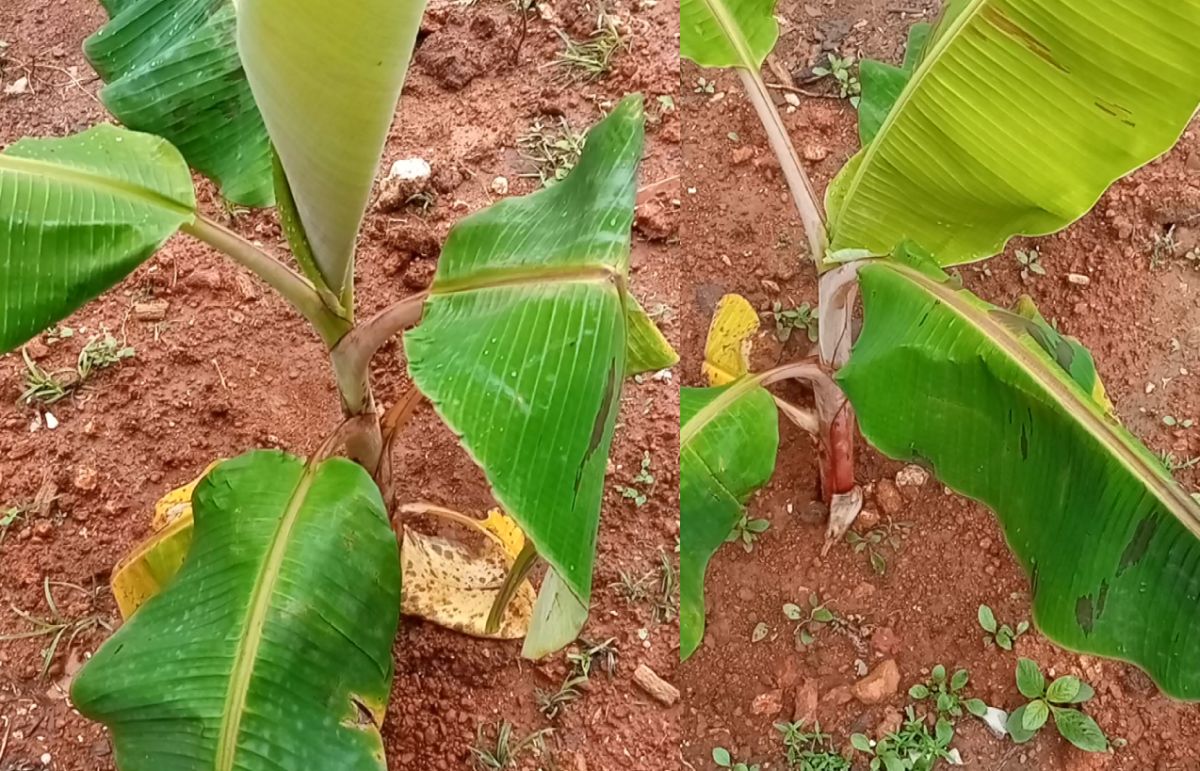
The plants continued to grow well on ground soil, though there was one more bout of caterpillar infestation which could be removed successfully, without much difficulty. Soon the plants started developing baby plants, which was quite a surprise for me. The baby plants were much larger than the original tissue culture plantain plants!
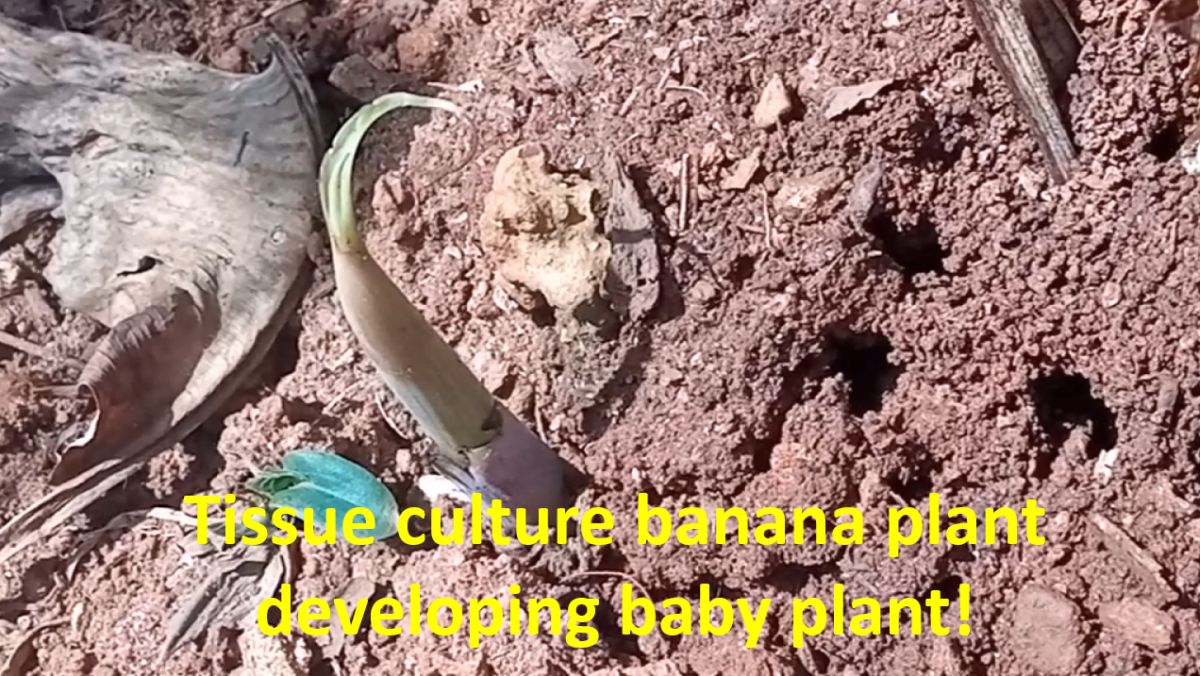
In between, there were issues of water supply and manuring. There was no water source in the place where I was growing the plantain plants on ground soil. It was the time when the Covid 19 pandemic was just subsiding. We had several five litre cans at home which had come with the sanitizer supply. These sanitizer cans were cleaned well and used to transport water for the plantain plants on an alternate day basis. Initially I had tried organic manure which came in packets, with a yellow colour, along with a second small packet of microbial powder. Later I switched on to locally available material like the plenty of green weeds which were growing around the plants as I did not want to spend on commercially available manure. This I called as ‘Weed as Feed Program’.
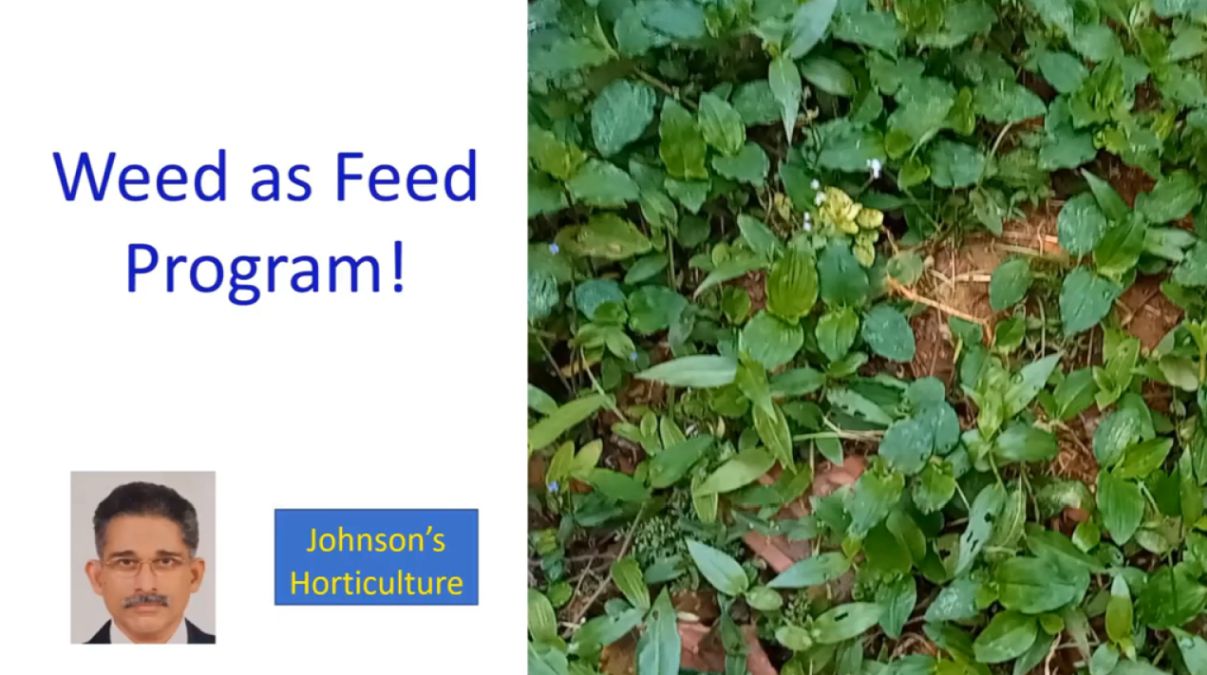
Next option for manure came out of sheer necessity. Vegetable and food waste at home used to be collected by persons designated by the local authorities. Later there was a change in the regulations, stating that the food waste should be processed at home. Small composting devices were available in the market for processing this. But I thought that it could be smelly when kept indoors and opted to give vegetable and other food waste directly to the plants as manure. Initially I used to add the microbial powder which was surplus from previous purchases of commercial organic manure. Later I found that the earthworms which were there in planty in the soil would easily process the vegetable and food waste without any problem. When the dry season came I added dry leaves which were also available in plenty, along with the kitchen waste. This had multiple advantages. One is of course, cleaning the compound. If we try to burn them, smoke would be a problem. Secondly it would destroy the earthworms and other useful microbes in the soil.
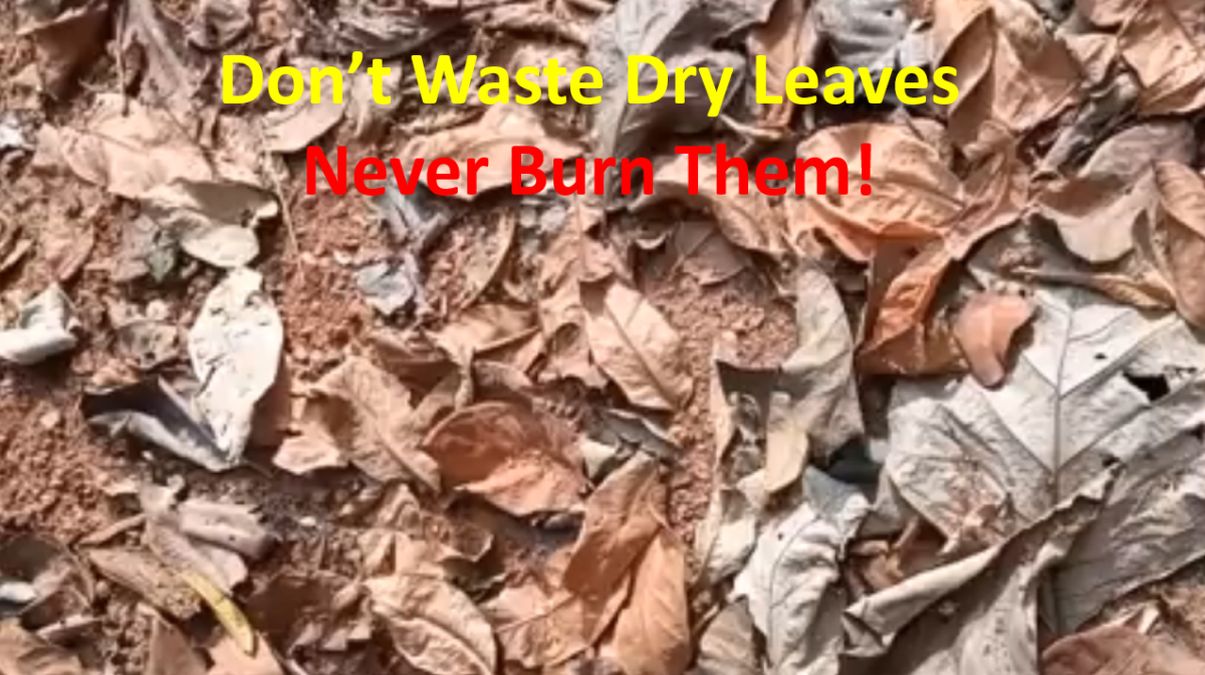
All these processes continued on a regular basis and the plantain plants grew well. At the time of purchase, it was mentioned from the nursery that the plants would bear fruits in about six months. Though the plants grew well, there was no sign any fruits at six months nor at nine months. The long wait continued, causing a little bit of despair. But the excellent growth of the plants made us persist in our care. Finally at the end of a long wait of about ten months, the first and the biggest of the tissue culture plantain plants developed a flower bud. Needless to say that we were overjoyed with the sight of the plantain flower bud, high up on the plant!

Later other plantain plants also started bearing fruits and you can see three of them in various stages of development in this clipping. The end of the inflorescence after the main plantains were developed could be cut off and used for preparing a tasty dish. In our childhood we would also drink the nectar from the plantain flowers. Till date seven of the ten tissue culture plantain plants have borne fruits. One dried off in the summer, in spite of watering well, though I have no regrets because surprisingly, it has produced four nice baby plantain plants before it dried off. Those baby plants are still growing well. So I am not sure whether it was just the summer which caused the plant to dry off. Two plants are yet to bear fruits, though now I am sure that will, in the near future.
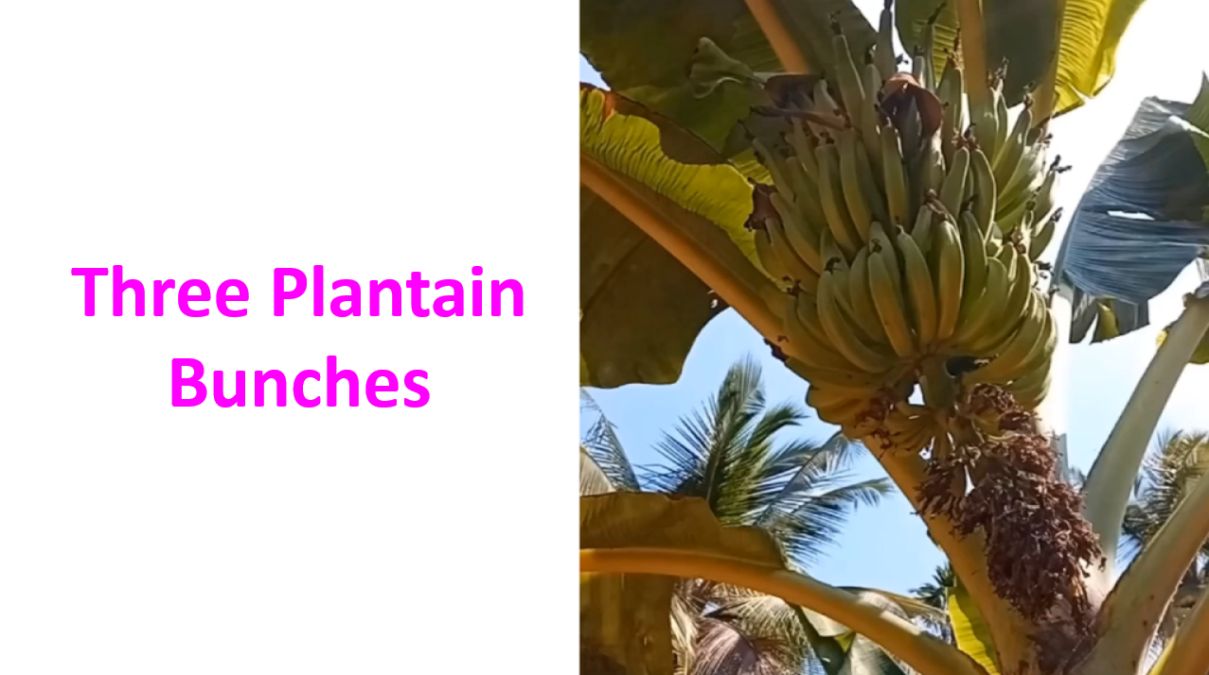
Then came the day for harvesting the first banana bunch, almost one year after the plants were planted. This is the video clip I had uploaded at that time, showing the plant in the beginning along with banana bunch on the tree and the bunch after harvesting. Needless to say that we were overjoyed with the first harvest of tissue culture banana bunch. There were over a hundred plantains in the bunch. It was quite heavy and needed two us to get it down and to home, especially as the plant was twice as tall as us. We had to secure the plant with a rope before harvesting so that the plantains would not fall on the ground and get damaged. We could make different types of dishes as well as the tasty banana chips with them. Some of them have started ripening and we can have a feast on them as well.
